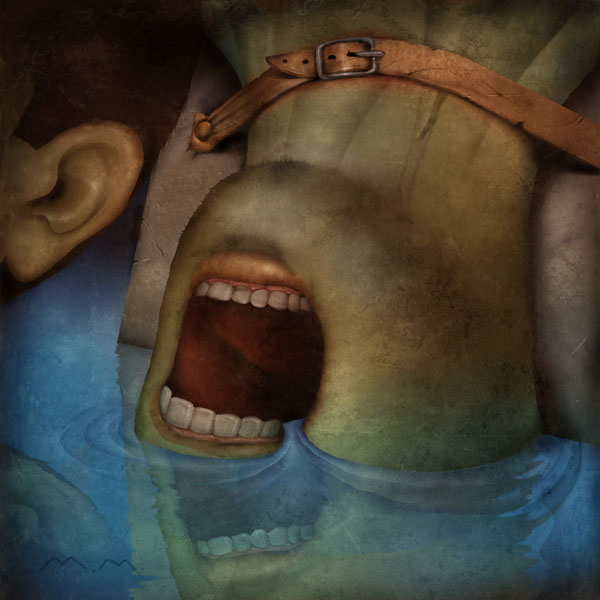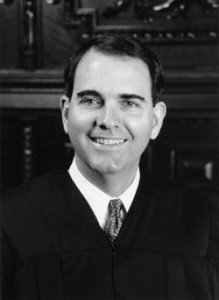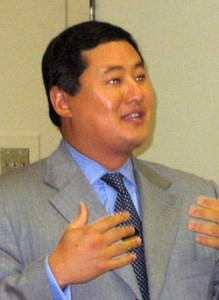Torture Memo Shields Interrogators
One of the most important building blocks in the Bush administration’s apparatus of torture became public Thursday. An Aug. 1, 2002 memorandum from the
Jul 31, 202010.2K Shares2.5M Views
Illustration by: Matt Mahurin
One of the most important building blocks in the Bush administration’s apparatus of torture became public Thursday.
An Aug. 1, 2002 memorandumfrom the Justice Dept.’s Office of Legal Counsel to the Central Intelligence Agency instructed the agency’s interrogators on specific interrogation techniques for use on Al Qaeda detainees in its custody. Most of the 17-page memo is blacked out and unreadable. But at least one of those techniques is waterboarding, the process of pouring water into the mouth and nostrils of a detainee under restraint until drowning occurs.
“This is a critical piece of the story,” said Jameel Jaffer, head of the national security project at the American Civil Liberties Union, which obtained the memorandum under a Freedom of Information Act filing. “This is the most explicit statement out there that the CIA waterboarded prisoners becaused the Justice Dept. authorized them to do so.”
Image has not been found. URL: http://www.washingtonindependent.com/wp-content/uploads/2008/09/nationalsecurity1-150x150.jpgIllustration by: Matt Mahurin
Herman Schwartz, professor of law at American University, said the legal advice on display in the memorandum amounted to “out-and-out-fraud.”
Today, Judge Alvin K. Hellerstein of the U.S. District Court for the Southern District of New York, who has been adjudicating the ACLU’s extensive declassification lawsuit against the U.S. government for the past four years, ordered the memorandum released. Signed by Jay Bybee, then the head of the Office of Legal Counsel, the memorandum is heavily influenced by the legal theories of Bybee’s then-subordinate, John Yoo. Torture-watchers have long referred to the memo, which congressional inquiriesidentified years ago, as “Yoo-Bybee II.”
That’s because Yoo-Bybee I, written around the same time as this document, contended that it would only be illegalfor interrogators to inflict pain upon detainees equivalent to “organ failure, impairment of bodily function or even death.” Anything short of that standard, that memo argued, was legal under the Federal Torture Statute. This newly declassified memo was an attempt at practicality: given the legal standard laid out in the first memo, Yoo-Bybee II advised the CIA on specific interrogation techniques that were now permissible.
“You have asked this Office’s views on whether certain proposed conduct would violate the prohibition against torture,” Bybee wrote to the CIA on Aug. 1, 2002. While that “proposed conduct” is all redacted from view, another document declassified today — a CIA memo from 2004 back to the Office of Legal Counsel — refers to a “classified 2002 DoJ opinion” that “interrogation techniques including the waterboard” are legal.
Jay Bybee, Office of Legal Counsel
It is impossible to know for sure what exactly the memorandum says, thanks to its heavy redactions. But it appears that the Yoo-Bybee II memo explains how CIA interrogators can evade prosecution for torturing detainees. “To validate the statute, an individual must have the specific intent to inflict severe pain or suffering,” it reads at one point. “Because specific intent is an element of the offense, the absence of specific intent negates the charge of torture. … We have further found that if a defendant acts with the good faith belief that his actions will not cause such suffering, he has not acted with specific intent.”
In a phone interview, Jaffer called the contention “sweeping,” adding that it had never been accepted by any court. “Imagine that in an ordinary criminal prosecution,” he said. “A bankrobber tortures a bank manager to get the combination to a vault. He argues that the torture was not to inflict pain, but to get the combination. Every torturer has a reason other than to cause pain.”
He continued, “If you’re going to let people off the hook for an intention other than to cause pain, you’re not going to be able to prosecute anyone for torture.”
American University’s Schwartz also took exception to the memorandum’s definition of torture. “Their definition is outrageous,” he said in a phone interview. “Excruciating pain even for 30 seconds will induce people to say anything.”
At another point, the memo contended that in order for the torture to be legal, it had to occur “outside of the United States.” That would help explain why the CIA established the so-called “black sites”— undisclosed torture chambers — in Poland, Romania, and other countries. The fear of a change in that standard by a piece of 2004 legislation is included in the just-released 2004 CIA memo. A proposed amendment by Sen. Dick Durbin (D-Ill.) to the year’s defense authorization bill stated, “no person in the custody or under the physical control of the United States” shall be tortured, and the CIA sent that language, underlined, to the Justice Dept. for advice on its implications. It is unclear how Justice replied, if at all. (The amendment passed, but it is unclear what effect it had.)
John Yoo
Similarly, when it comes to mental duress, the Justice Dept. wrote that the “exclusive” prohibitions under the Federal Anti-Torture Statute were “the intentional infliction or threatened infliction of severe physical pain or suffering; (2) the administration or application, or threatened administration or application of mind altering substances or procedures calculated to disrupt profoundly the senses or the personality; (3) the threat of imminent death; or (4) the threat that any of the preceding acts will be done to another person.” It would not be permissible to cause “prolonged mental harm,” defined in the Yoo-Bybee II memo as “harm lasting months or even years after the acts were inflicted upon the prisoner.”
Last month, however, Physicians for Human Rights released a studyof 11 torture survivors from U.S. detention facilities in Iraq, Afghanistan and Guantanamo Bay. All exhibited continuing damage from their treatment, with many reporting depression, substance abuse and attempted suicide. Yet none of those former detainees were subjected to waterboarding. In the report’s introduction, ret. Army Maj. Gen. Antonio Taguba, who investigated the torture at Abu Ghraib, wrote, “there is no longer any doubt as to whether the current administration has committed war crimes.”
Yoo did not respond to a phone call to his Berkeley office requesting comment. Neither did the office of Sen. Patrick Leahy (D-Vt.), chairman of the Judiciary Committee, which subpoenaed — but never received — the Yoo-Bybee II memo last year.
The military has conducted more than a dozen investigations into torture committed by officers and enlisted personnel, and has prosecuted many offenders. But the CIA has conducted only one quasi-investigation, performed by its inspector general, John Helgerson. (For that, Helgerson found himselfinvestigatedby the office of CIA Director Michael Hayden.)
“It’s very easy to make a case for a serious criminal investigation,” Jaffer said. “There is copious evidence at this point that senior officials authorized torture, and as a result of the authority given to them by senior officials, CIA interrogators tortured prisoners in their custody. It’s a disgrace there hasn’t been a serious investigation of why CIA adopted interrogation methods that amount to torture and what happened as a result.”

Camilo Wood
Reviewer
Camilo Wood has over two decades of experience as a writer and journalist, specializing in finance and economics. With a degree in Economics and a background in financial research and analysis, Camilo brings a wealth of knowledge and expertise to his writing.
Throughout his career, Camilo has contributed to numerous publications, covering a wide range of topics such as global economic trends, investment strategies, and market analysis. His articles are recognized for their insightful analysis and clear explanations, making complex financial concepts accessible to readers.
Camilo's experience includes working in roles related to financial reporting, analysis, and commentary, allowing him to provide readers with accurate and trustworthy information. His dedication to journalistic integrity and commitment to delivering high-quality content make him a trusted voice in the fields of finance and journalism.
Latest Articles
Popular Articles


